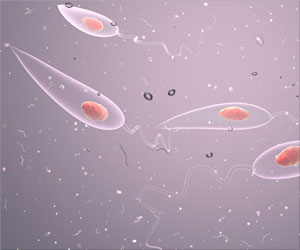Genome analysis of Leishmania parasites has uncovered a surprising level of variation at the genome structure level, new research has revealed.

Leishmaniasis is a disfiguring and potentially fatal disease that affects two million people each year. There are four main forms of the disease; ranging from skin lesions (cutaneous leishmaniasis), caused by species that include Leishmania mexicana, to a deadly infection of internal organs (visceral leishmaniasis) caused by Leishmania donovani parasites.
In the first study, the researchers generated a high-quality draft genome of L. donovani using a sample taken from an infected patient in Nepal. The team used this as a reference framework to analyse a further 16 isolates from Nepal and India that had different responses to antibiotic medications.
"Our work highlights how genomic research changes our perspectives about these parasites," says Dr Matt Berriman from the Sanger Institute, and a leading author on both studies. "We show that the evolution of these organisms is driven not only by single-letter changes in their genetic codes, but also by larger mutations in the copy numbers of genes and entire chromosomes. The findings have enabled us to discover more about its natural variation and genetic structure which is vital for the further development of effective treatments."
The second study focused on producing a reference genome for L. mexicana from a sample taken in Guatemala and comparing it with existing reference genomes for various Leishmania species on the spectrum of cutaneous to visceral disease. Working with colleagues from the University of Glasgow and University of York, the research team discovered that each of the Leishmania species that have been fully sequenced hasroughly 8,000 genes, yet L. mexicana has only two genes that are unique to it.
"These findings have important implications for the understanding of parasite variation and the genetic basis of disease. Leishmania has taken a different path to most organisms because of its extensive and highly unusual variation in chromosome and gene-specific copy numbers," says Tim Downing, a lead author on the research from the Sanger Institute. "This variation in the copy numbers of chromosomes and genes provides a new dimension to monitoring the evolution of drug resistance in these parasites."
Advertisement
"We must maintain continuous surveillance to monitor the threat from the on-going emergence of drug resistance. These studies provide the tools to identify and analyse new variants as they emerge," says Jean-Claude Dujardin, senior author from the Institute of Tropical Medicine in Antwerp. "This basic biological difference in the way that drug resistance emerges in Leishmania is essential for tracking strains and resistance.
Advertisement
The first study enhances the genomic understanding of the most dangerous end of the spectrum of Leishmania species, and also provides clues to the genetic and genomic basis of drug resistance. The second study shows for the first time the scale of abnormal chromosomes in Leishmania species. This is thought to help with the evolution of the species and a possible cause for antibiotic resistance.
The overall picture is of unusual genetic forces equipping the parasites in unexpected ways to circumvent attempts to control them. This research will go a long way to understanding the cause of drug resistance when treating Leishmania.
Source-Eurekalert











